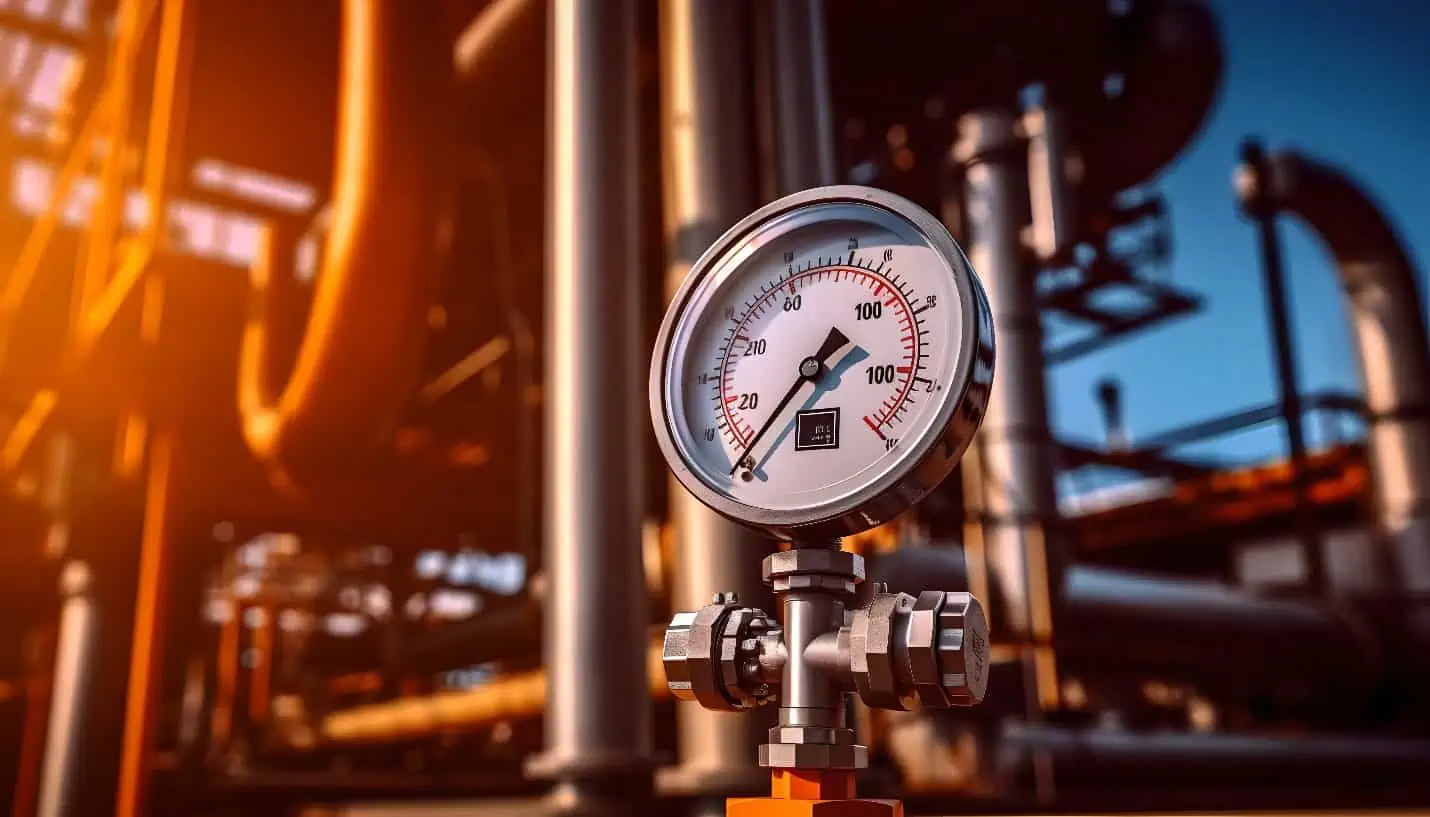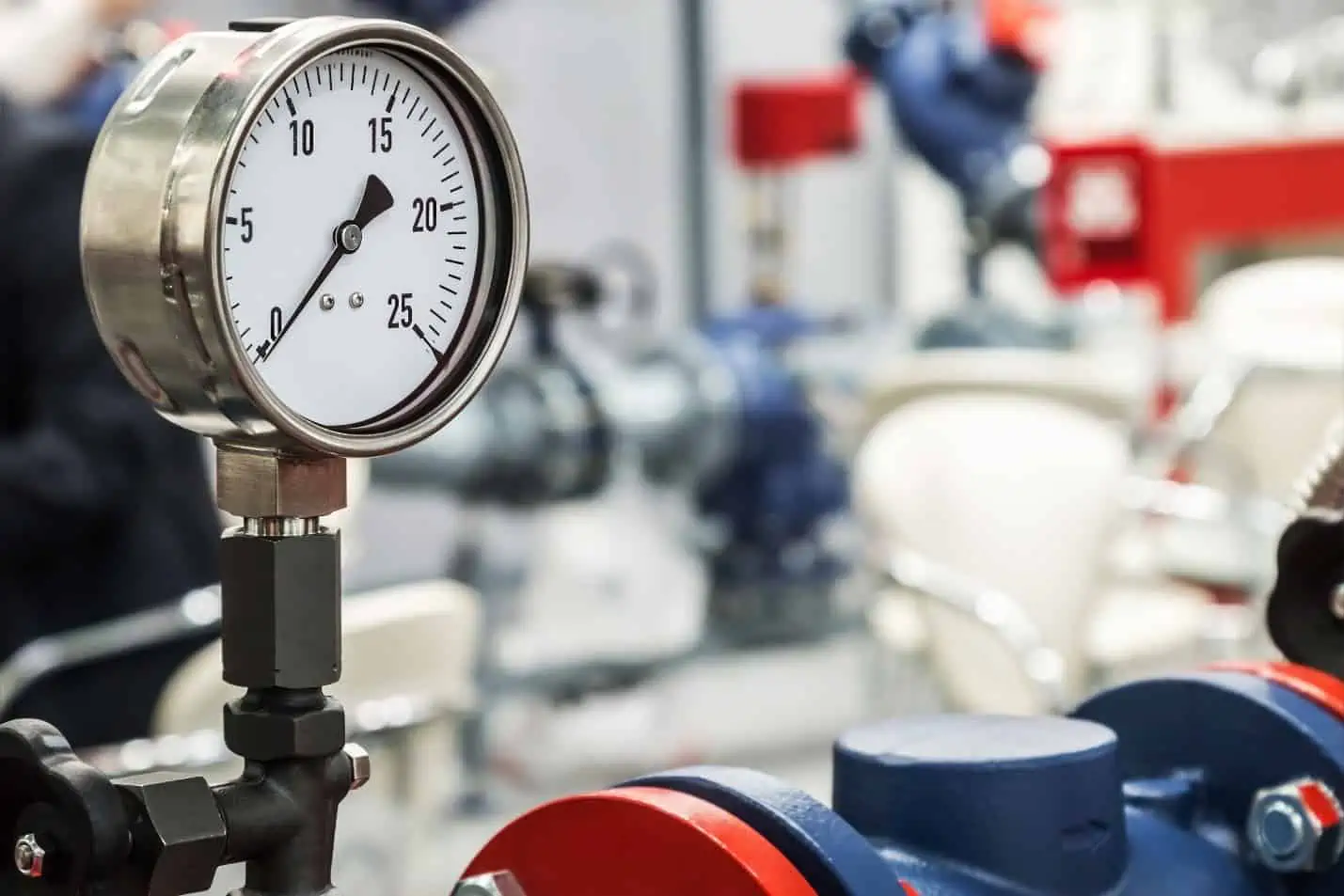Inclined manometers are a type of manometer used for measuring pressure, utilizing a column of liquid to indicate the pressure difference between two points. The distinguishing feature of inclined manometers is the presence of a tube set at an angle, allowing for more sensitive measurements of pressure changes compared to vertical manometers.

In this article, we will explore the principles behind the inclined manometer, its installation and measurement procedures, as well as its applications in various industries.
What is an Inclined Manometer
A manometer is a pressure measurement device that typically consists of a U-shaped tube filled with a liquid (such as mercury, water, or oil). One end of the tube is open to the atmosphere or connected to a reference pressure, while the other end is exposed to the pressure being measured. The pressure difference between the two ends causes the liquid level in the tube to rise or fall, allowing for the pressure to be calculated based on the height difference of the liquid columns.
There are various types of manometers, one of which is the inclined manometer. Inclined manometers, also called inclined tube manometers, are a variation of the U-tube manometer where the tube is inclined at an angle, rather than being vertical, as shown in the diagram below. This design enhances the resolution and sensitivity of the fluid column height changes due to pressure variations.

Elevate Your Engineering With Excel
Advance in Excel with engineering-focused training that equips you with the skills to streamline projects and accelerate your career.

The inclined manometer takes advantage of the fundamental principle in fluid mechanics that pressure exerted by a fluid at rest always acts perpendicular to any surface in contact with it. By measuring the fluid column height along an incline, a small change in pressure causes a larger movement of the fluid column along the tube compared to a conventional vertical manometer, increasing the device’s sensitivity.
The instrument can measure a wide range of pressures by adjusting the inclination of the tube. Typically, the tube is inclined at an angle between 15 and 45 degrees relative to the horizontal. A lower angle is chosen for low-pressure measurements, while a higher angle is used for high-pressure measurements.
The choice of manometric fluid is also vital for the operation of an inclined manometer. The fluid must be of known density, often mercury or water, and should have a clear delineation between its top surface and the rest of the medium it is measuring. For example, mercury is preferred when measuring gas pressures due to its high density and minimal adhesion to glass, resulting in a clear meniscus.
Pressure Calculation Using Inclined Manometer
The pressure difference between the two ends of the manometer is given by the equation:

Where:
- P1 = pressure induced at the well [Pa]
- P2 = pressure induced at the tube [Pa]
- ρ = density of the manometric fluid [kg/m3]
- g = acceleration due to gravity [9.81 m/s2]
- h = vertical difference in liquid levels between the tube and the well [m]
- L = length of the liquid inside the tube [m]
- θ = angle of inclination of the tube with respect to the horizontal [rad]
Installation and Measurement
Precise installation and correct setup are critical for the accurate function of an inclined manometer. It is essential to adhere to specific mounting guidelines, ensure a secure connection to the pressure source, and meticulously adjust for level accuracy.
Mounting Guidelines
The inclined manometer should be mounted on a vertical surface where it can remain stable. It is vital that the mounting surface is free from vibration and thermal expansion effects that could affect its accuracy.

Secure mounting brackets are typically provided with the manometer and must be used to fasten the device firmly to the mounting surface, preventing any movement that could disrupt measurement.
Connection to Pressure Source
For accurate pressure measurements, the inclined manometer must be correctly connected to the pressure source. Flexible tubing is used to attach the manometer’s pressure inlet to the source. Ensure that all fittings are tight to avoid leaks, which can lead to false readings.
Level Adjustment
To function correctly, the inclined manometer needs to be perfectly leveled. Most manometers have a built-in spirit level. One should adjust the manometer until the bubble within the spirit level is centered.
Adjustment screws typically found at the base or side of the manometer are used to level the instrument. Confirming the device is level both horizontally and longitudinally is imperative for precise measurements.
Reading the Manometer
When reading an inclined manometer, position oneself perpendicular to the manometer scale to minimize parallax error. It is essential to read the manometric fluid level at the meniscus, which is the curve seen at the top of the fluid column. Document the reading where the meniscus touches the measurement scale, noting the corresponding pressure value.
Zeroing the Scale
Before taking any measurements, the manometer scale must be zeroed, which means adjusting the fluid level to the zero mark on the scale while ensuring that the device is level. Verify that there is no pressure difference acting across the manometer during this step. Zeroing corrects for any ambient temperature and atmospheric pressure changes that may have caused shifts in the fluid level since the last use.
Applications of Inclined Manometers
Inclined manometers are precision instruments utilized in various scenarios requiring meticulous pressure measurements. Applications include laboratory experiments, HVAC systems, and calibration processes, particularly in environments where gas flow and pressure must be thoroughly controlled and monitored.
Advantages of these devices are extensive:
- Precision: Due to their design, inclined manometers offer heightened sensitivity, capable of detecting minute pressure changes. They translate these small changes into larger movements along the scale, facilitating more precise readings.
- Range and Scale: The measurement range can be adjusted depending on the inclination angle, allowing for a comprehensive span of pressure detections. This adaptability makes them suitable for both low and moderate pressure applications.
- Accuracy: With the potential for a finely graduated scale, precise readings down to a hundredth of an inch are achievable, enhancing the reliability of the measurements obtained.
- Simplicity and Durability: These manometers are known for their simplicity and lack of moving parts, which translates to lower maintenance requirements and longevity.
Applications of inclined manometers are particularly valuable for systems with low-pressure differentials. These include ventilation systems, where they help in monitoring the airflow dynamics, and medical equipment calibration, ensuring accurate pressure readings critical for patient care. They also play a significant role in fluid mechanics research and are utilized in the calibration of other pressure measurement devices, serving as a reference standard due to their high accuracy.
